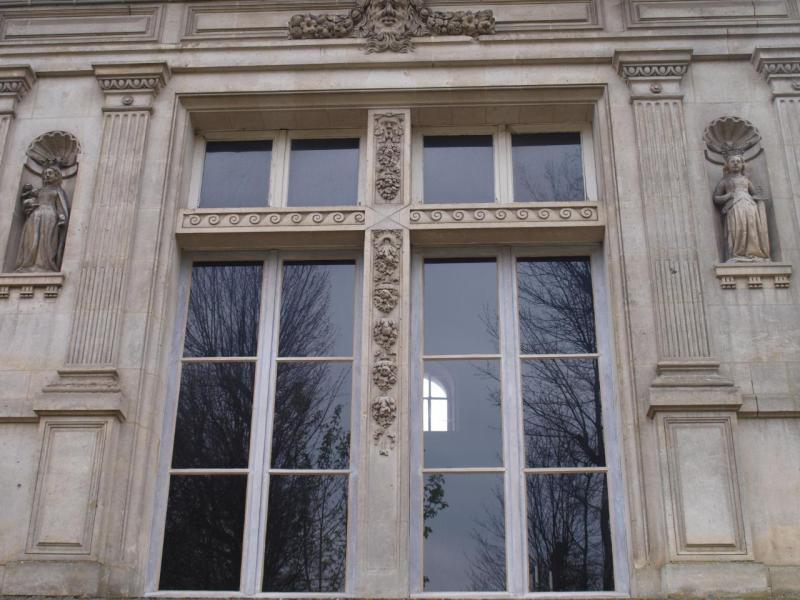
Facade details
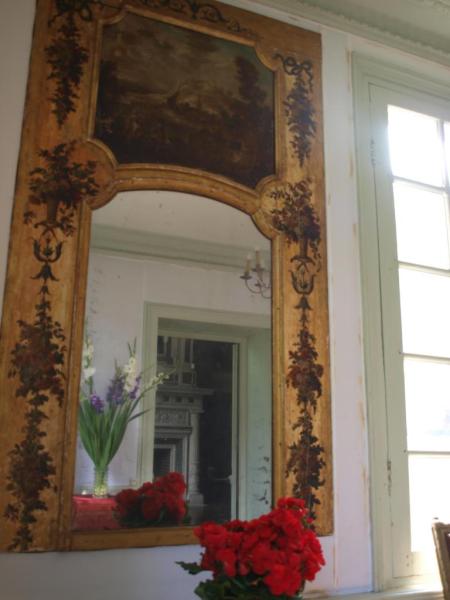
At the main entrance of the Pavillon Henri II, your first sight is an 18th-century mirror with delicate roses painted on a gold leaf background, topped with a canvas painting. (Old element from Villers-Cotterêts Castle, saved during the Revolution and placed in the first room for preservation.)
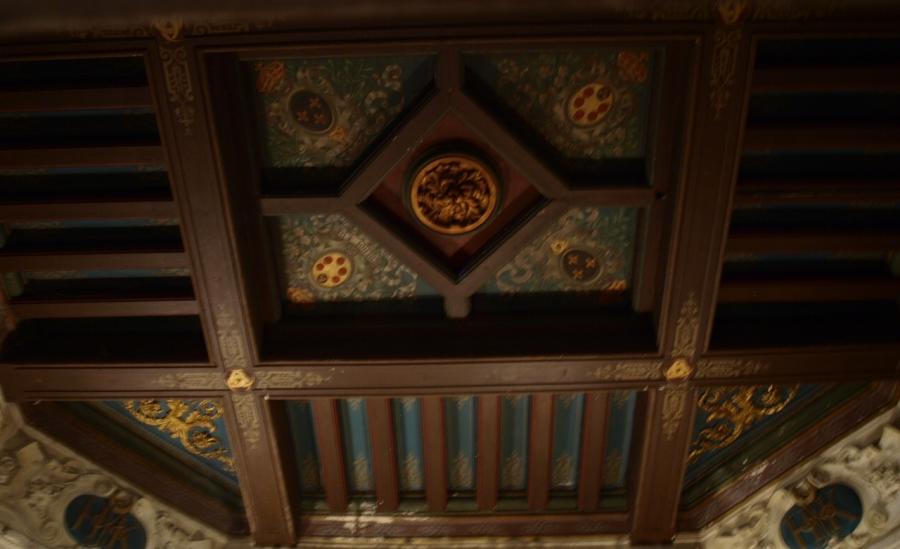
Perched nearly 6 meters up, the coffered ceiling bears the Latin and Greek emblems and mottos of King Henri II and Queen Catherine de Medicis:
Donec Totum Impleat Orbem (translation displayed above the door).
Phoôs Pheroi Ede Galenen (The rainbow brings clear weather).
Donec Totum Impleat Orbem (translation displayed above the door).
Phoôs Pheroi Ede Galenen (The rainbow brings clear weather).
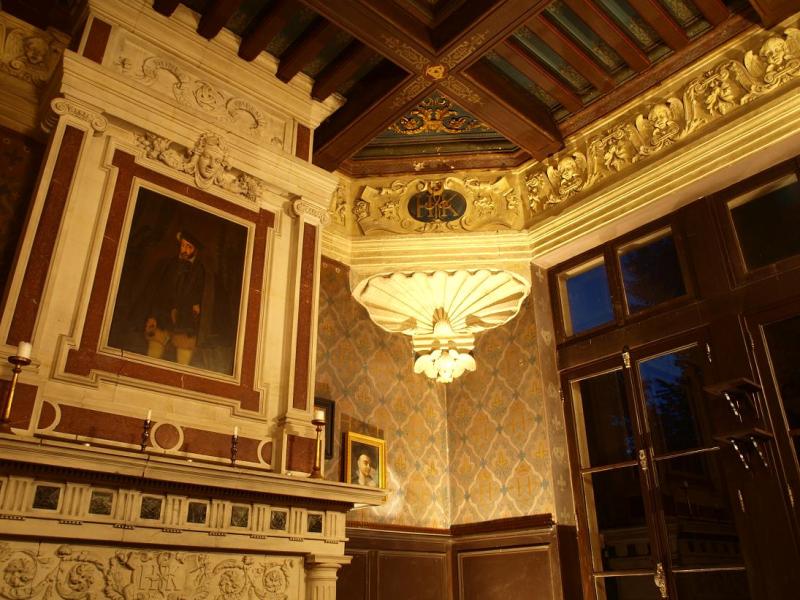
Main room of Le Pavillon Henri II.
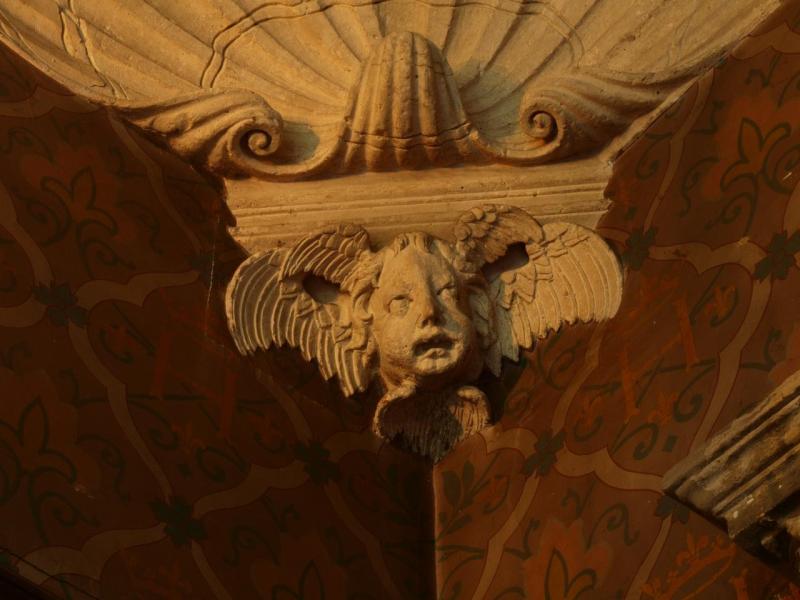
One of the four egregores in the main room.
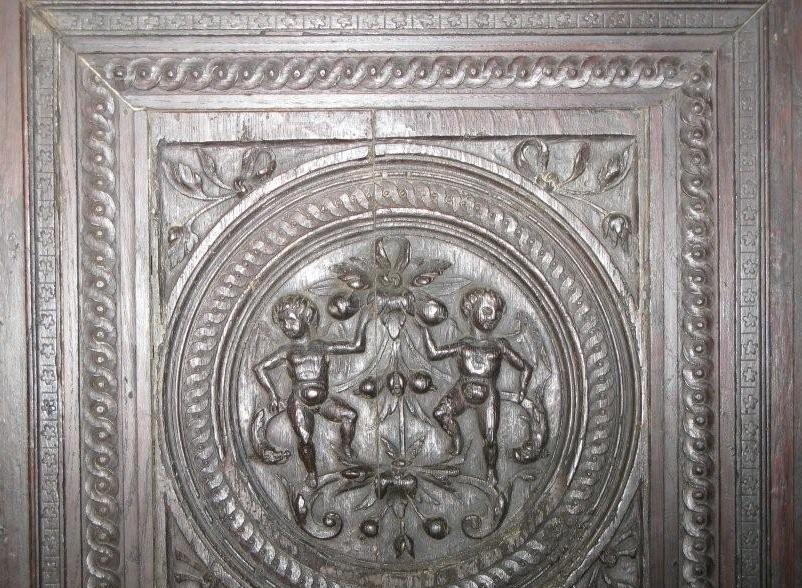
Carved wood panel likely from the 17th century. This beautiful piece probably came from Château François I during its dismantling in 1795.
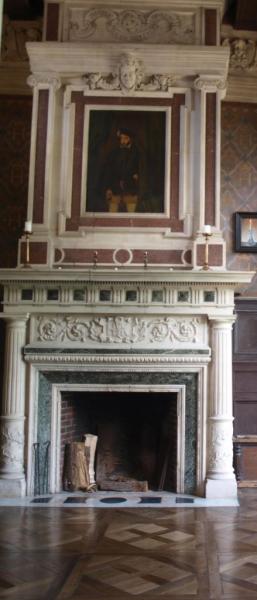
Designed following the entablature model, the area above the hearth is decorated with various friezes, columns, and marble highlights.

One of the 2 16th-century consoles in the pavilion, showing the evangelists. Here, Saint Luke with the bull.
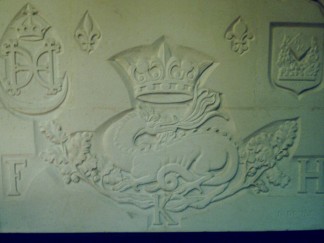
Stone relief made by Bernard Druet.
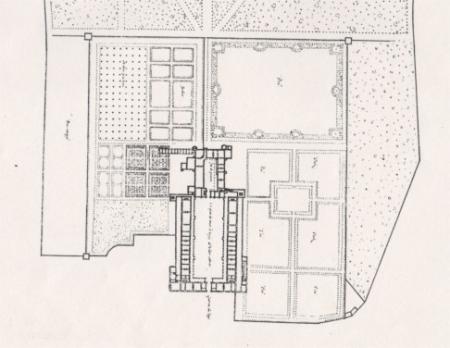
Castle plan drawn by Jacques Androuet du Cerceau in early 1560 showing Henri II Pavilion.
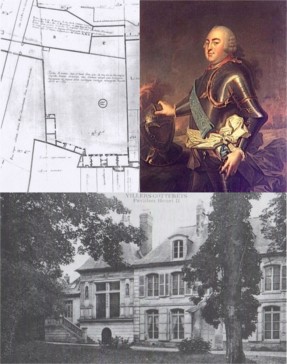
Top right: portrait of the Duke of Orléans (1725-1785) who expanded and redecorated the Pavilion starting 1756.
Top left: 1794 inventory plan highlighting the Duke's extensions.
Bottom: photo of Le Pavillon Henri II showing main expansion (building disappeared between the wars).
Top left: 1794 inventory plan highlighting the Duke's extensions.
Bottom: photo of Le Pavillon Henri II showing main expansion (building disappeared between the wars).
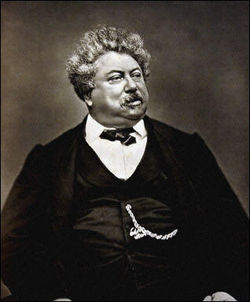
Alexandre Dumas in chapter 21 of his "Memoirs" writes about Le Pavillon Henri II, then owned by Mr. Deviolaine, his godfather. Two quotes:
- "Now, in the midst of this darkness, where half-erased dreams float, stands clearly the memory of the three main houses of my childhood."
- "Mr. Deviolaine's house was a palace greatly appreciated by me..."
- "Now, in the midst of this darkness, where half-erased dreams float, stands clearly the memory of the three main houses of my childhood."
- "Mr. Deviolaine's house was a palace greatly appreciated by me..."
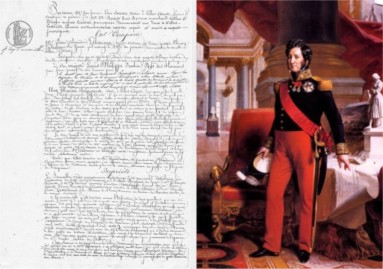
Left: Sales act of August 30, 1843. Mme Lebaigue sells Henri II Pavilion and its dependencies to His Majesty King Louis-Philippe.
Right: Portrait of King Louis-Philippe.
Right: Portrait of King Louis-Philippe.
